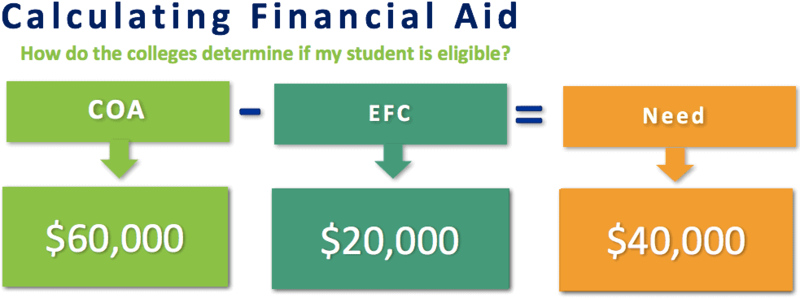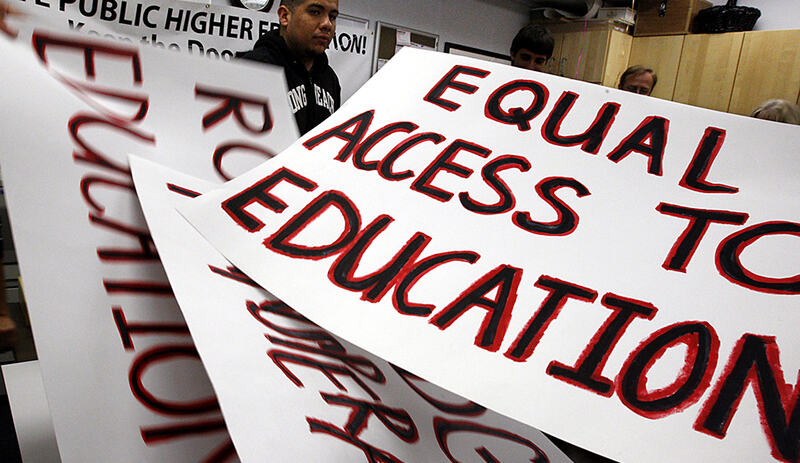Advertisement
In America, financial aid is intended to establish equality for all students, no matter their economic situation. Nevertheless, research and reports continuously reveal a disparity in financial assistance that often benefits richer students compared to those less wealthy. This inconsistency originates from numerous complicated factors such as how the monetary need is evaluated, the impact of merit-based help, and priorities within institutions. This article examines the causes why affluent learners commonly get more economic aid than those with less money, and how this affects their entry to advanced education.
The main reason why wealthy students get more financial aid compared to those with less money is due to how the calculation of financial need works. Federal aid programs f.sm or students, such as what's distributed through the Free Application for Federal Student Aid (FAFSA), use a specific method that considers things like family income, assets, and the number of people in the household. However, this calculation may not always take into account all types of assets or the actual monetary struggles lower-income families experience.

Families with more money may have more difficult finance portfolios, such as investments, savings, and property. This can make it look like they possess a bigger financial resource even if many of these are not easily accessible or cash equivalents. Meanwhile, families earning less income might not own much to declare but they typically grapple harder with everyday costs. Due to this disparity in situations, the aid calculation often ends up giving more funds to those perceived as having greater capacity for payment though their actual fiscal conditions do not necessarily indicate their real requirements.
An important reason for the unequal distribution of financial aid is the dominance of scholarships based on merit. These are generally given depending on educational performance, skills in sports, or other successes rather than monetary requirements. Merit-based scholarships carry a lot of value for many pupils but they usually favor those students who come from..m rich families as these students can pay for high-ranking schools, join preparatory classes, and take part in extra activities that strengthen their applications.
Many leading universities give big scholarships based on achievement to attract brilliant students, sometimes ignoring the financial limitations of those who receive them. Although such scholarships are essential for some students, these funds often end up with those least in need, resulting in fewer opportunities for low-income students to obtain aid toward their schooling expenses.
Universities themselves have a part in the financial aid difference because of their institutional priorities. Schools that have big endowments, frequently private entities, can give more financial assistance to students. However, they often concentrate on drawing high-performing students which usually advantage wealthier applicants. These schools may provide abundant aid programs but typically give priority to pupils from rich backgrounds to maintain their rankings and reputation. This is achieved by focusing on academic and extracurricular qualifications that are more readily available to wealthy families with access to resources like tutors, test preparation courses, and travel opportunities.
On the other hand, public entities and colleges with fewer endowments may lack equal resources to offer financial support, resulting in fewer choices for poorer students. Even though some state universities do provide need-based aid, many are limited by their state's budgets and might not be capable of fully satisfying the monetary requirements of low-income students.
The wealth and societal associations of a family can also impact the process of getting financial aid, this is more prominent in elite educational institutions. Some colleges still give preference to legacy students. These are individuals whose parents or grandparents have been part of the same institution.
Normally, such students hail from affluent backgrounds and hence possess greater chances for admission as well as receiving packages for financial aid that meet their monetary requirements. The action of legacy admissions is being examined closely, however it continues in many top-rated schools. This contributes to the ongoing cycle of wealth and education where students with more financial resources get special treatment during the process of getting monetary help for studies.
Another element that influences the difference in financial help is the application of need-blind admissions rules. When we say need-blind admissions, it refers to a student's economic necessity not being taken into account when admission decisions are made. Even though this may seem fair at first glance, numerous institutions with need-blind policies still don't manage to satisfy all the monetary requirements of their accepted students. This situation makes students with less income face unfulfilled needs, pushing them to either borrow money or agree to receive less financial help than what they need.
Policies that don't consider financial need are typically found in rich, private universities with hefty funds. However, these institutions usually focus on attracting advanced students who might not come from poor families. Consequently, whilst the admission policy ignoring financial needs seems unbiased, it frequently fails to tackle fundamental problems related to wealth and education.
The difference in financial help can have important effects on students who come from poor families. Many of them, having less money for their studies, need to take big student loans which may impact their future economic condition. Also, the insufficient funding options available for low-income learners could lead to fewer chances of getting into top-notch universities and this further restricts their job opportunities and continues the cycle of poverty.

The difference in financial support for wealthy and poor students strengthens inequality within higher education. Those who possess the resources to go to college can obtain a greater amount of opportunities, whereas those unable to afford it remain disadvantaged. This unequal access to learning perpetuates the class divide existing in society, raising an obstacle for numerous learners striving towards bettering their social position.
The system of financial aid in the United States is not without flaws, and there's a notable gap between the assistance granted to wealthy students compared to those who are poor. This inequality arises from various factors like methods used for calculating financial requirements, importance given to merit-based aids, priorities on an institutional level as well as influence of family wealth. Until we rectify these systemic problems that exist at present, lower-income learners will keep facing hindrances in their loop of wealth accumulation through education, restricting them from obtaining higher education or realizing their full capabilities. It is very important for those who make policies and establishments to take into account these differences. They should strive to develop a fairer financial aid system that genuinely assists all students, no matter what their monetary situation may be.
Advertisement

By Mason Garvey/Jan 07, 2025

By Darnell Malan/Nov 13, 2024

By Elena Davis/Oct 21, 2024

By Vicky Louisa/Nov 05, 2024

By Aldrich Acheson/Dec 11, 2024

By Juliana Daniel/Oct 20, 2024

By Georgia Vincent/Jan 13, 2025

By Nancy Miller/Jan 15, 2025

By Noa Ensign/Apr 01, 2025

By Christin Shatzman/Jan 09, 2025

By Korin Kashtan/Oct 20, 2024

By Triston Martin/Oct 24, 2024